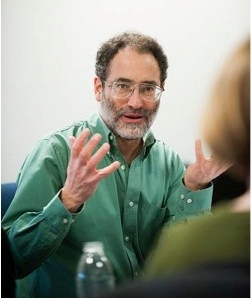23
2017
The Big Shift in Fundraising
Note: This guest post is from Andy Robinson, a terrific fundraising trainer and consultant who works across North America. On November 15, Andy will be in St. Paul, leading a workshop for the Minnesota Council of Nonprofits: Mobilize Your Board to Raise More Money. I hope you can join him! -Dania Like many fundraisers, I always anticipate the annual release of Giving USA, which offers a thorough overview of trends in U.S. philanthropy. I’ve also been reading Ruth McCambridge of the Nonprofit Quarterly, whose cogent analysis of the Giving USA data is really helpful – and inspired this post. Thanks,…
22
2017Ten Ways to Find New Donors
The third essay in a series by Dania Toscano Miwa and Jim Toscano We all want new donors—as many as possible!!! We all need new donors—as many as possible to replace those who didn’t renew and more. We all hope for new donors—as many as possible to help us finance new, important projects. In the last essay we talked about retention. Now we will focuson recruitment. How then do we go about finding donors? That often depends on how sophisticated your existing donor program is, how much resource and time you can devote to discovery, cultivation and solicitation, and how…
06
2017Increasing Donor Loyalty
Second in a series One of the most important and efficient ways to maintain and increase current revenue is in the retention of existing donors. Blackbaud estimates that it costs 6-7 times more to acquire a new donor than to retain an existing donor. A new donation offers up the promise of a long-term relationship. Like a friendship it must be two-way, worked on, mutually rewarding, respectful meaningful, and above all, loyal. Yet we lose many donors, often because the two-way character of the relationship is not understood. The latest report from the 2016 Fundraising Effectiveness Survey of the Urban Institute…
11
2017Eleven Ways to Increase Nonprofit Revenue
Dania Toscano Miwa and Jim Toscano For many nonprofits the current revenue situation is undergoing change, especially those seeking growth. With increasing numbers of nonprofits, higher competition, changes in individual giving, more narrow focusing of many foundations and corporations and impending loss of some government funding, where do we look for stability and growth of revenue? Here are eleven options. Many work together. Not all, or any, may fit specific nonprofit organizations. Hopefully, out of these possibilities, will come some opportunity for increased revenue or a stimulus for creative new options. Overall, the first step is to build a culture…
30
2016
New Twists on Philanthropy
Last week saw an interesting development in the world of philanthropy, usually defined as giving money to good causes. Often there is also an assumption that it’s done as a donation to a charity, with a tax deduction for the gift. Now we have two examples where that isn’t the case, or almost not the case. Variants on the impact investments of foundations and greater flexibility allowed private business, these new efforts have a much more defined focus. When the examples are provided by George Soros and Dr. Priscilla Chan and Mark Zuckerberg, other philanthropists take notice. George Soros’ Focus on…
15
2015
Guest Post – A Nickel Sent Was A Nickel Wasted (Almost)
By Jim Thalhuber I received a solicitation in the mail today from a well-known national nonprofit organization and there it was, peeping through the small, round window on the front of the envelope — a shiny, brand new 2015 “Return to Monticello” nickel, minted in Denver, bearing an image of President Thomas Jefferson (based on the Rembrandt Peal painting of 1800) on the obverse and the 1938 restored design of Jefferson’s Virginia home of Monticello on the reverse. I trust/hope that the soliciting nonprofit organization has done its homework and can prove that the nickel gambit is effective in securing new…
23
2015
Organizing for Success
As consultants, we are engaged for many reasons: an organization has a great mission, but needs help to operationalize its program; or an organization has a need for funding, but doesn’t have a plan; or the Executive Director micromanages and needs help in sorting out what she/he should actually be doing. One thing every organization needs is time. Time to plan. Time to think about the how’s, who’s and when’s. Planning is key to operational success. Yet, we hear clients tell us they feel reactive or they are constantly trying to get ahead of the work, ahead of funding deadlines, ahead…
02
2015
A New, Old Fear
Since the great recession of 2007-2010, gifts to charities have changed in subtle ways. Not only was there a temporary reduction in overall totals, but the mix has also changed. The interior and shape of the gift pyramid have changed. Donor behavior has changed. There are many bright spots as we emerge from the crisis. We hear many accounts of increases in digital giving, often in small amounts, although in larger numbers. Certain “days” resound with increasing totals, such as the Give to the Max and Giving Tuesday. Crowd-funding may be a new avenue, or a temporary fad. We also…
28
2014
Is this a Good Idea?
Do we need yet another group organized to promote nonprofit organizations and defend their good name? Do we need a march to support “the cause of causes?” Dan Pallotta, the controversial special events organizer and TED talk champion of nonprofit organizations’ need for such things as sufficient overhead and competent administration, has just formed the Charity Defense Council. Do we need Defense, or do we really need Offense? The Council purpose is to create better, widespread public understanding of nonprofits’ need for appropriate overhead, for market compensation of workers and for greater public support for increased giving. The CDC’s agenda…
09
2014
Five Inexorable Nonprofit Changes
Sometimes change is dramatic, cataclysmic. The volcano in Iceland erupts. This rarely happens in the world of nonprofit organizations, where constant but more subtle change is apparent. The ice shelf in Antarctica is irreversibly melting. Even the iconic, national American pastime has evolved from infielders standing on bases to times when no one is anywhere near third base! The difference is similar to whether a lobster is thrown directly into boiling water, or into a pot of cold water that’s gradually heating up. The result is often the same, one taking a bit longer. The same scenario with the pot…
